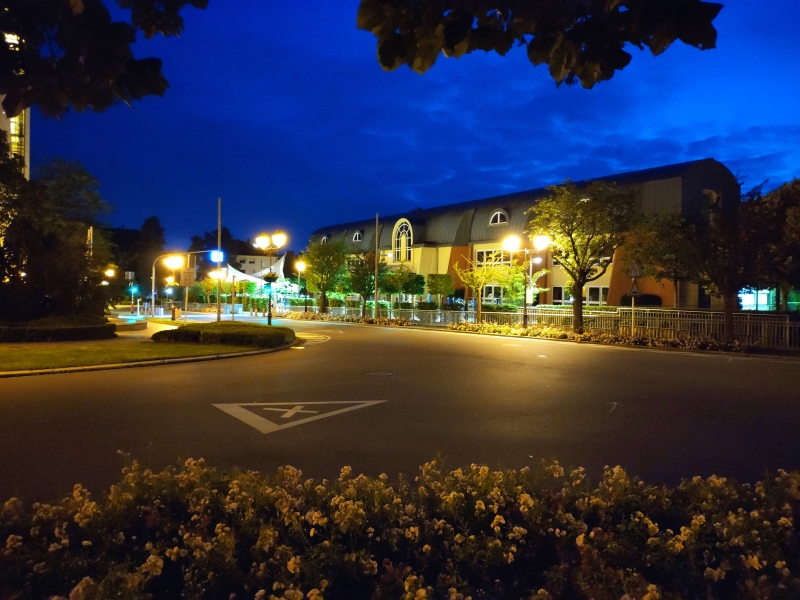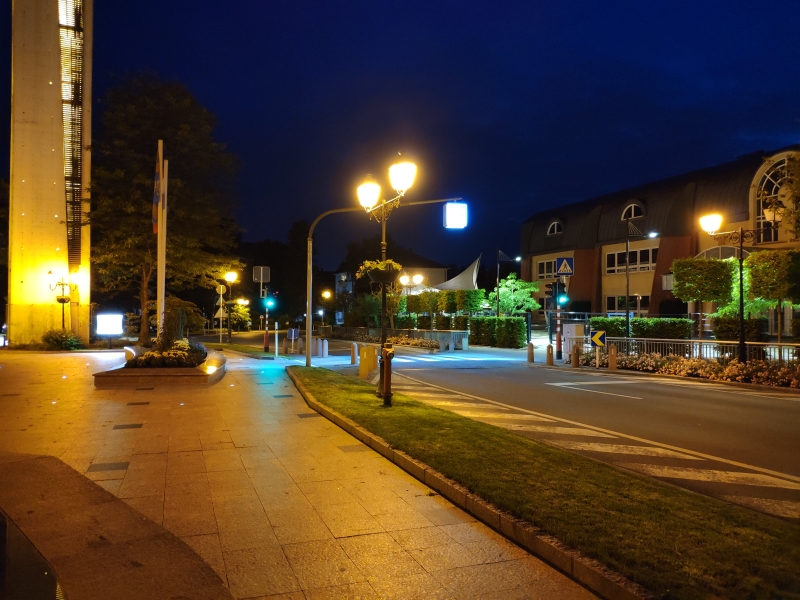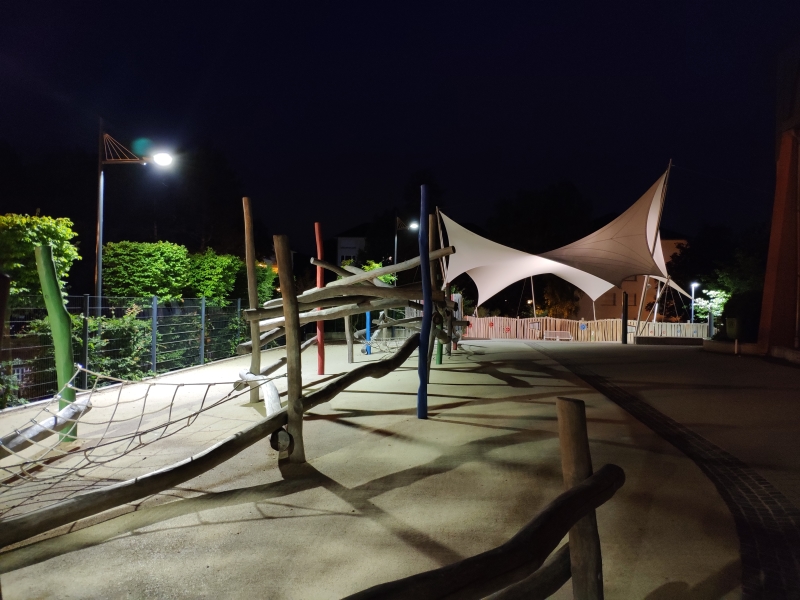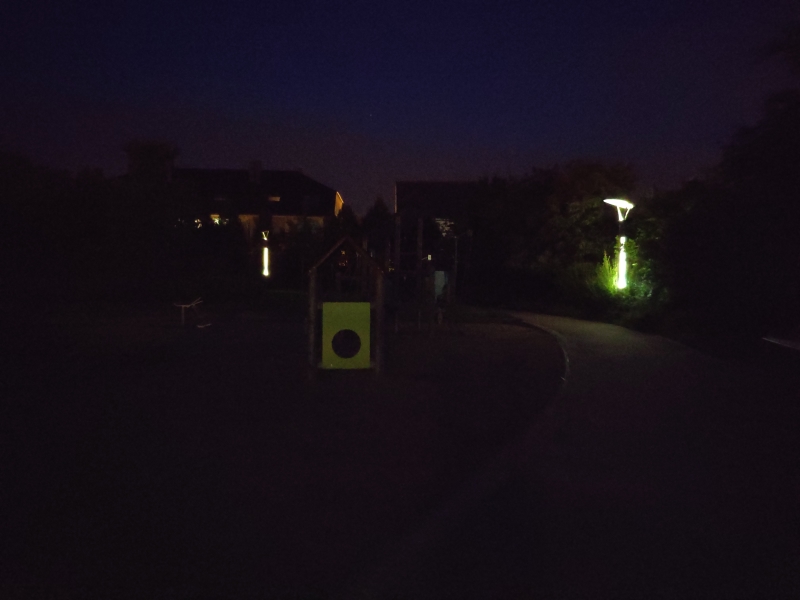The Xiaomi Mi MIX 2S Review: Fantastic Overall Value
by Andrei Frumusanu on June 29, 2018 8:00 AM EST- Posted in
- Mobile
- Smartphones
- Xiaomi
- MI MIX 2S
Camera - Low Light Evaluation
Moving on to low-light shots of the MIX 2S. The 1.4µm pixel pitch of the sensor along with the F/1.8 lens should give respectable results, although I’m not expecting it to beat the competition as it its optics are simply at a disadvantage in terms of raw technical specifications for low-light capture.
[ Mi MIX 2S ]
[ P20 Pro ] - [ P20 ] - [ P10 ]
[ Galaxy S9+ ] - [ iPhone X ] - [ Pixel 2 XL ]
Xiaomi’s tendency to oversaturate the scene takes on a funky result here as the MIX 2S is really bringing out the colours, especially on the blue sky in this after-sunset picture. The picture’s highlights are brought out too much as objects are too bright, but it’s still a good result. Xiaomi is lacking natural dynamic range here and thus the shadows are too dark, having too little light capture.
Although the MIX 2S produces a noisy picture, this actually helps it as it avoids the smudged textures that we see on the S9. Overall it’s still a good result, and it depends on preference on what you like more.
[ Mi MIX 2S ]
[ P20 Pro ] - [ P20 ] - [ P10 ] - [ Mate 10 Pro ]
[ Galaxy S9+ ] - [ iPhone X ] - [ Pixel 2 XL ]
In this shot Xiaomi surprisingly managed to produce a better dynamic range than the competition – bar the P20 Pro in 10MP mode which just has much better shadows. The S9 shot ended up oddly out of focus, so it’s not a valid comparison.
Detail wise the MIX 2S also actually wins out over Huawei and Apple, producing an excellent shot.
[ Mi MIX 2S ]
[ P20 Pro ] - [ P20 ] - [ P10 ] - [ Mate 10 Pro ]
[ Galaxy S9+ ] - [ iPhone X ] - [ Pixel 2 XL ]
Here the MIX 2S does really well in exposure, and beats the iPhone X and Pixel 2 XL in dynamic range. Colour reproduction seems also to be very good – something the S9 struggled with as it produces a far too warm result for the white lighting.
Detail wise the MIX 2S also beats the iPhone and Pixel, but the S9 just has more light capture to work with and does better on the textures and has more contrast. Obviously the P20 Pro wins out in the 10MP mode, as even though it’s a lower resolution image, the dynamic range advantage through the superior light capture is plainly obvious.
Extreme low light photography
[ Mi MIX 2S ]
[ P20 Pro ] - [ P20 ]
[ P10 ] - [ Mate 10 Pro ]
[ Galaxy S9+ ] - [ iPhone X ] - [ Pixel 2 XL ]
In extreme low-light environments the MIX 2S doesn’t have any special capture mode, and the resulting picture remains at a similar quality level as say, an iPhone X.
Overall the MIX 2S did not disappoint in terms of low-light capture. Its tendency to not apply too much noise reduction seems to come at an advantage for the camera as it avoids smudging out textures, resulting in more retained raw detail, although again, it’s noisy. Competitively it seems like a better low-light camera than the iPhone X and the Pixel 2’s. It’s trailing the Galaxy S9, but that was to be expected given the aperture disadvantage. While the MIX 2S beats the P20’s from Huawei in medium light in terms of details – at a certain point in sufficient low light, the P20 Pro’s vast light capture advantage turns the tide and maintains the current quality crown in terms of quality.














61 Comments
View All Comments
Andrei Frumusanu - Friday, June 29, 2018 - link
722MB/s R 243 MB/s W on 8 threads. The issue with NAND performance tests is that they're generally broken and aren't properly representative of real file system performance.Pallmei - Friday, June 29, 2018 - link
Ok, did a few AndroBench 8 threads test: average 750MB/s read 200MB/s write on Mi Mix 2. Can not quite reach 250MB/s write, but otherwise very much the same.** A - R ** - Friday, June 29, 2018 - link
Then, how do Samsung & Toshiba advertise their Read/Write Speeds for UFS NAND ?Are they not Real ?
Andrei Frumusanu - Friday, June 29, 2018 - link
They're real but the question is if those numbers are representative of the file system. The hardware can be fast but if the software doesn't manage it correctly it's not meaningful. Currently that's a lot more complex question.Glock24 - Friday, June 29, 2018 - link
I had a Redmi Note 3 SE that didn't resist the 10,001nth drop. The RN5 Pro for Taiwan was the only viable replacement due to network support, but was not yet available. I prefer to have SD sopport on the phone, but I finally settled for the Mi Mix2 64GB for $365. It'll arrive in about a week.serendip - Sunday, July 1, 2018 - link
A Mi Max 2 would have had the right network support and still get you MicroSD support.arashi - Sunday, July 1, 2018 - link
Mi Max series are ginomous.Glock24 - Sunday, July 1, 2018 - link
None of the Mi Max series have LTE B2/B4 that I need. Besides, those are like having a Kindle Fire as a phone, just ridiculously bug.Glock24 - Sunday, July 1, 2018 - link
*bigeastcoast_pete - Friday, June 29, 2018 - link
Hi Andrei, any comments/conclusions regarding the availability of OS and security updates from Xiaomi? I never owned one of their phones, but a manufacturer's committment to keeping their phones current for the next 2-3 years is key for any purchase for me. For example, I had a bad experience with Huawei (no updates at all despite official promises) and that put me off their phones for the foreseeable future.